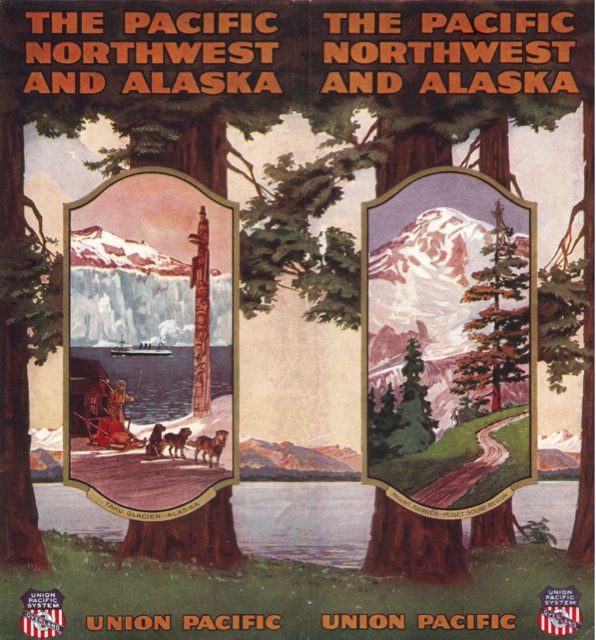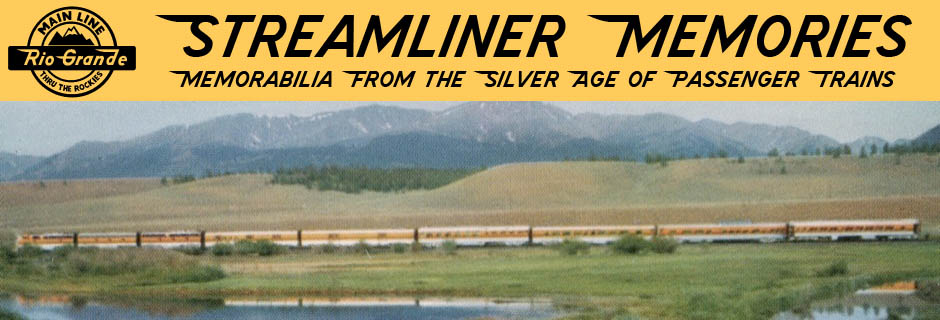This 1923 booklet is in the “painted-cover” format, and the back cover painting (shown below) includes representations of Alaska and Washington’s Mt. Rainier. Part of the front cover shows Multnomah Falls, but unfortunately someone clipped off half of the front cover of my copy, so I can only guess that this half pictured something from British Columbia, possibly a totem pole. Update: Looking closer, I don’t think someone cut something off; I think that, for some reason, the booklet came with only half of a front cover.
 Click image to download a 24.6-MB PDF of this 36-page booklet.
Click image to download a 24.6-MB PDF of this 36-page booklet.
The interior has 60 black-and-white photos; the only color used is a pale cyan to represent water on a few maps. The then-new Columbia River Highway was considered enough of a scenic wonder to deserve eight photos and a full-page drawing on the title page. This highway, which connected Portland with Hood River through the waterfall-laden Columbia River Gorge, was first promoted by Sam Hill (James J. Hill’s coincidentally named son-in-law) and designed by Samuel C. Lancaster. Lancaster did an incredible job fitting the highway to the landscape, and the road received national attention then and most of it remains today a beloved part of the Oregon landscape.
Lancaster built a twisty road that repeatedly ascended and descended the side of the gorge, requiring several tunnels and bridges. While ideal for tourists, it was terrible for moving freight and thus represented no threat to the Union Pacific or other railroads of the day. Lancaster would go on to design the Mt. Carmel Highway in Zion National Park.
